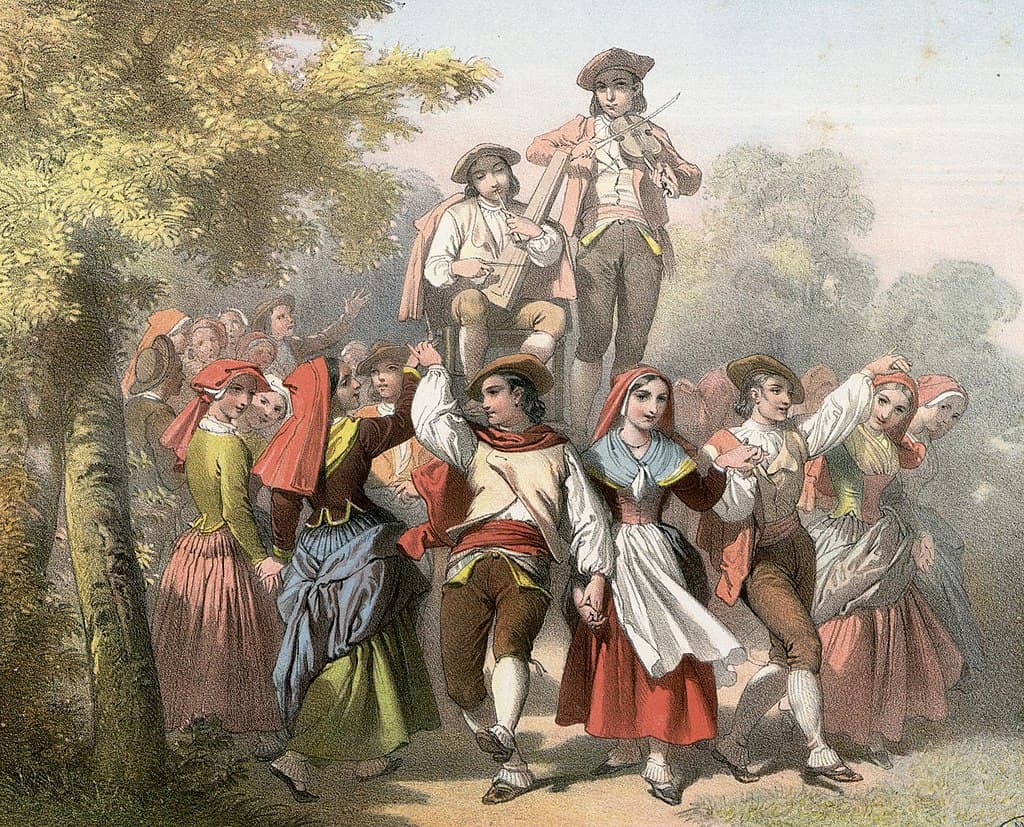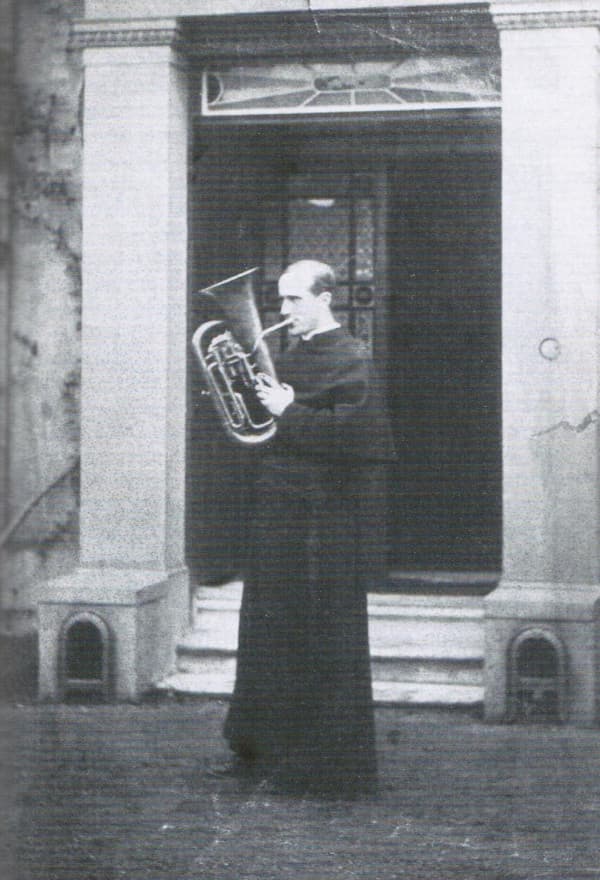What started out as a 16th-century dance song was changed in the 19th century into a Christmas carol.
In Thoinot Arbeau’s Orchésographie, a study of late Renaissance French dance, published in 1589, he gave instruction on social behaviour in the ballroom, and how dancers and musicians interacted. He also provided dance instruction and music for the dances. The Branle was a dance where a circle or chain of dancers, joined arm in arm or hand in hand, danced sideways – generally 4 large steps to the left followed by 4 smaller steps to the right.

Alfred Dartiguenave: Branle d’Ossau, 1855–1856
Arbeau’s Branle de l’Official took its name either from Arbeau’s own position as an official of the Church or could refer to the office of the household staff. In his description of the dance, Arbeau says it was danced by lackeys and serving wenches or sometimes by young men and women of quality at a masquerade when they were disguised as peasants and shepherds.
The Official Branle
This branle, which has only recently received recognition, is danced in duple time with little springs…and it commences with a double à la gauche and a double à droite (double steps to the left and right). Then the dancers move continuously to the left for six simples, at the end of which the musicians make a cadence. Whereupon the men take the women by the waist and assist them to leap into the air and light upon the said cadence…
He then comments on the difficulty of the leap for men if the women don’t help by jumping.
You can hear the Branle de l’Official here, starting at 01:08:
Thoinot Arbeau: Orchesographie (excerpts) – Branles: La dance de la haye – Branle de l’Official (The Broadside Band; Jeremy Barlow, cond.)
Ah! That sounds familiar!
The Anglican priest George Ratcliffe Woodward (1848–1934) took the dance melody and fit words to it, publishing it in 1924 with his collaborator composer Charles Wood in The Cambridge Carol-Book. Woodward had an interest in most English music-making and bell-ringing, and that shows up in the lyrics.

George Ratcliffe Woodward and his euphonium
Ding Dong! merrily on high
In heav’n the bells are ringing
Ding, dong! verily the sky
Is riv’n with angel singing
Gloria, Hosanna in excelsis
E’en so here below, below
Let steeple bells be swungen
And i-o, i-o, i-o
By priest and people be sungen
Gloria, Hosanna in excelsis
Pray ye dutifully prime
Your matin chime, ye ringers
May ye beautifully rime
Your evetime song, ye singers
Gloria, Hosanna in excelsis.
Traditional: Ding, Dong Merrily on High (arr. D. Willcocks) (Michael Bloss, organ; The Elora Singers; Noel Edison, cond.)
What makes this carol so wonderful are the cascading lines on the word ‘Gloria’ that end each verse. In a sense, there’s nothing in the lyrics that speaks to Christmas, but the fact that heaven is evoked, bells are ringing, it must be Christmas!
For more of the best in classical music, sign up for our E-Newsletter


